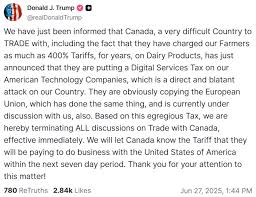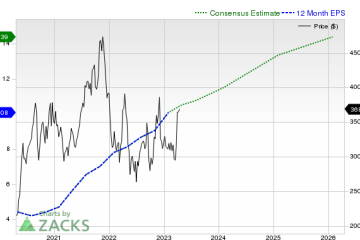The Impact of Donald Trump’s Tariffs on Canada

Introduction
The tariffs imposed by former U.S. President Donald Trump have significantly shaped trade relations between Canada and the United States. As one of Canada’s largest trading partners, the implications of these tariffs on various sectors are crucial for Canadian businesses and the economy. Understanding these tariffs is vital, given the ongoing discussions about trade agreements and policies in the post-Trump era.
Background on Tariffs
In the summer of 2018, the Trump administration announced tariffs on a variety of goods, including steel and aluminum, claiming national security as the primary justification. Canada, being a major exporter of these metals to the U.S., was particularly impacted. These tariffs, originally set at 25% for steel and 10% for aluminum, drew widespread criticism and led to retaliatory measures from the Canadian government.
Retaliation and Impact on Specific Industries
In retaliation, Canada imposed its own tariffs on U.S. goods, affecting over $12 billion worth of imports, including products like whiskey, playing cards, and various types of steel. This tit-for-tat escalated tensions and created uncertainties within the trade landscape. With Canada’s manufacturing sector heavily reliant on U.S. demand, industries such as automotive parts, agriculture, and consumer goods noted reductions in export volumes.
Current Developments
Since President Joe Biden took office, there has been a reinvigorated effort to stabilize trade relations. Discussions are ongoing about the potential rollback of some tariffs, especially concerning key sectors. However, as of October 2023, many tariffs previously imposed remain in effect, and their future hinges on the evolving U.S.-Canada trade dynamics.
Significance for Canadian Businesses
The continued presence of these tariffs presents challenges and opportunities for Canadian businesses. Companies must navigate the complexities of international trade while adapting to potential policy shifts. Moreover, Canada’s ongoing efforts in diversifying trade relationships through agreements with various other nations may provide some relief from dependence on the U.S. market.
Conclusion
In conclusion, Donald Trump’s tariffs on Canada have had a lasting impact on trade relations and economic sectors across the nation. As discussions of free trade agreements evolve, Canadian businesses need to remain vigilant and flexible. The future of tariffs and trade policy will significantly influence the Canadian economy, highlighting the need for continuous adjustment and strategic planning in light of changing international landscapes. Readers should stay informed about these developments, as they hold tremendous significance for economic growth and trade stability in the coming years.









